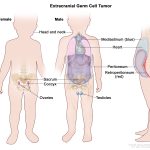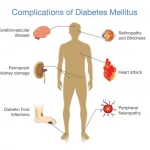Acquired immunodeficiency syndrome (AIDS) is a chronic, potentially life-threatening condition caused by the human immunodeficiency virus (HIV). By damaging your immune system, HIV interferes with your body’s ability to fight infection and disease.
HIV is a sexually transmitted infection (STI). It can also be spread by contact with infected blood or from mother to child during pregnancy, childbirth or breast-feeding. Without medication, it may take years before HIV weakens your immune system to the point that you have AIDS.
There’s no cure for HIV/AIDS, but medications can dramatically slow the progression of the disease. These drugs have reduced AIDS deaths in many developed nations.
Symptoms
The symptoms of HIV and AIDS vary, depending on the phase of infection.
Primary infection (Acute HIV)
Some people infected by HIV develop a flu-like illness within two to four weeks after the virus enters the body. This illness, known as primary (acute) HIV infection, may last for a few weeks. Possible signs and symptoms include:
- Fever
- Headache
- Muscle aches and joint pain
- Rash
- Sore throat and painful mouth sores
- Swollen lymph glands, mainly on the neck
- Diarrhea
- Weight loss
- Cough
- Night sweats
These symptoms can be so mild that you might not even notice them. However, the amount of virus in your bloodstream (viral load) is quite high at this time. As a result, the infection spreads more easily during primary infection than during the next stage.
Clinical latent infection (Chronic HIV)
In this stage of infection, HIV is still present in the body and in white blood cells. However, many people may not have any symptoms or infections during this time.
This stage can last for many years if you’re not receiving antiretroviral therapy (ART). Some people develop more severe disease much sooner.
Symptomatic HIV infection
As the virus continues to multiply and destroy your immune cells — the cells in your body that help fight off germs — you may develop mild infections or chronic signs and symptoms such as:
- Fever
- Fatigue
- Swollen lymph nodes — often one of the first signs of HIV infection
- Diarrhea
- Weight loss
- Oral yeast infection (thrush)
- Shingles (herpes zoster)
- Pneumonia
Progression to AIDS
Thanks to better antiviral treatments, most people with HIV in the U.S. today don’t develop AIDS. Untreated, HIV typically turns into AIDS in about 8 to 10 years.
When AIDS occurs, your immune system has been severely damaged. You’ll be more likely to develop opportunistic infections or opportunistic cancers — diseases that wouldn’t usually cause illness in a person with a healthy immune system.
The signs and symptoms of some of these infections may include:
- Sweats
- Chills
- Recurring fever
- Chronic diarrhea
- Swollen lymph glands
- Persistent white spots or unusual lesions on your tongue or in your mouth
- Persistent, unexplained fatigue
- Weakness
- Weight loss
- Skin rashes or bumps
Causes
HIV is caused by a virus. It can spread through sexual contact or blood, or from mother to child during pregnancy, childbirth or breast-feeding.
How does HIV become AIDS?
HIV destroys CD4 T cells — white blood cells that play a large role in helping your body fight disease. The fewer CD4 T cells you have, the weaker your immune system becomes.
You can have an HIV infection, with few or no symptoms, for years before it turns into AIDS. AIDS is diagnosed when the CD4 T cell count falls below 200 or you have an AIDS-defining complication, such as a serious infection or cancer.
How HIV spreads
To become infected with HIV, infected blood, semen or vaginal secretions must enter your body. This can happen in several ways:
- By having sex. You may become infected if you have vaginal, anal or oral sex with an infected partner whose blood, semen or vaginal secretions enter your body. The virus can enter your body through mouth sores or small tears that sometimes develop in the rectum or vagina during sexual activity.
- By sharing needles. Sharing contaminated IV drug paraphernalia (needles and syringes) puts you at high risk of HIV and other infectious diseases, such as hepatitis.
- From blood transfusions. In some cases, the virus may be transmitted through blood transfusions. American hospitals and blood banks now screen the blood supply for HIV antibodies, so this risk is very small.
- During pregnancy or delivery or through breast-feeding. Infected mothers can pass the virus on to their babies. Mothers who are HIV-positive and get treatment for the infection during pregnancy can significantly lower the risk to their babies.
How HIV doesn’t spread
You can’t become infected with HIV through ordinary contact. That means you can’t catch HIV or AIDS by hugging, kissing, dancing or shaking hands with someone who has the infection.
HIV isn’t spread through the air, water or insect bites.
Risk factors
Anyone of any age, race, sex or sexual orientation can be infected with HIV/AIDS. However, you’re at greatest risk of HIV/AIDS if you:
- Have unprotected sex. Use a new latex or polyurethane condom every time you have sex. Anal sex is more risky than is vaginal sex. Your risk of HIV increases if you have multiple sexual partners.
- Have an STI. Many STIs produce open sores on your genitals. These sores act as doorways for HIV to enter your body.
- Use IV drugs. People who use IV drugs often share needles and syringes. This exposes them to droplets of other people’s blood.
Complications
HIV infection weakens your immune system, making you much more likely to develop many infections and certain types of cancers.
Infections common to HIV/AIDS
- Pneumocystis pneumonia (PCP). This fungal infection can cause severe illness. Although it’s declined significantly with current treatments for HIV/AIDS, in the U.S. PCP is still the most common cause of pneumonia in people infected with HIV.
- Candidiasis (thrush). Candidiasis is a common HIV-related infection. It causes inflammation and a thick, white coating on your mouth, tongue, esophagus or vagina.
- Tuberculosis (TB). In resource-limited nations, TB is the most common opportunistic infection associated with HIV. It’s a leading cause of death among people with AIDS.
- Cytomegalovirus. This common herpes virus is transmitted in body fluids such as saliva, blood, urine, semen and breast milk. A healthy immune system inactivates the virus, and it remains dormant in your body. If your immune system weakens, the virus resurfaces — causing damage to your eyes, digestive tract, lungs or other organs.
- Cryptococcal meningitis. Meningitis is an inflammation of the membranes and fluid surrounding your brain and spinal cord (meninges). Cryptococcal meningitis is a common central nervous system infection associated with HIV, caused by a fungus found in soil.
- Toxoplasmosis. This potentially deadly infection is caused by Toxoplasma gondii, a parasite spread primarily by cats. Infected cats pass the parasites in their stools, which may then spread to other animals and humans. Toxoplasmosis can cause heart disease, and seizures occur when it spreads to the brain.
Cancers common to HIV/AIDS
- Lymphoma. This cancer starts in the white blood cells. The most common early sign is painless swelling of the lymph nodes in your neck, armpit or groin.
- Kaposi’s sarcoma. A tumor of the blood vessel walls, Kaposi’s sarcoma usually appears as pink, red or purple lesions on the skin and mouth. In people with darker skin, the lesions may look dark brown or black. Kaposi’s sarcoma can also affect the internal organs, including the digestive tract and lungs.
Other complications
- Wasting syndrome. Untreated HIV/AIDS can cause significant weight loss, often accompanied by diarrhea, chronic weakness and fever.
- Neurological complications. HIV can cause neurological symptoms such as confusion, forgetfulness, depression, anxiety and difficulty walking. HIV-associated neurocognitive disorders (HAND) can range from mild symptoms of behavioral changes and reduced mental functioning to severe dementia causing weakness and inability to function.
- Kidney disease. HIV-associated nephropathy (HIVAN) is an inflammation of the tiny filters in your kidneys that remove excess fluid and wastes from your blood and pass them to your urine. It most often affects black or Hispanic people.
- Liver disease. Liver disease is also a major complication, especially in people who also have hepatitis B or hepatitis C.
Prevention
There’s no vaccine to prevent HIV infection and no cure for AIDS. But you can protect yourself and others from infection.
To help prevent the spread of HIV:
- Use treatment as prevention (TasP). If you’re living with HIV, taking HIV medication can keep your partner from becoming infected with the virus. If you make sure your viral load stays undetectable — a blood test doesn’t show any virus — you won’t transmit the virus to anyone else. Using TasP means taking your medication exactly as prescribed and getting regular checkups.
- Use post-exposure prophylaxis (PEP) if you’ve been exposed to HIV. If you think you’ve been exposed through sex, needles or in the workplace, contact your doctor or go to the emergency department. Taking PEP as soon as possible within the first 72 hours can greatly reduce your risk of becoming infected with HIV. You will need to take medication for 28 days.
- Use a new condom every time you have sex. Use a new condom every time you have anal or vaginal sex. Women can use a female condom. If using a lubricant, make sure it’s water-based. Oil-based lubricants can weaken condoms and cause them to break. During oral sex use a nonlubricated, cut-open condom or a dental dam — a piece of medical-grade latex.
- Consider preexposure prophylaxis (PrEP). The combination drugs emtricitabine plus tenofovir (Truvada) and emtricitabine plus tenofovir alafenamide (Descovy) can reduce the risk of sexually transmitted HIV infection in people at very high risk. PrEP can reduce your risk of getting HIV from sex by more than 90% and from injection drug use by more than 70%, according to the Centers for Disease Control and Prevention. Descovy hasn’t been studied in people who have receptive vaginal sex.
Your doctor will prescribe these drugs for HIV prevention only if you don’t already have HIV infection. You will need an HIV test before you start taking PrEP and then every three months as long as you’re taking it. Your doctor will also test your kidney function before prescribing Truvada and continue to test it every six months.
You need to take the drugs every day. They don’t prevent other STIs, so you’ll still need to practice safe sex. If you have hepatitis B, you should be evaluated by an infectious disease or liver specialist before beginning therapy.
- Tell your sexual partners if you have HIV. It’s important to tell all your current and past sexual partners that you’re HIV-positive. They’ll need to be tested.
- Use a clean needle. If you use a needle to inject drugs, make sure it’s sterile and don’t share it. Take advantage of needle-exchange programs in your community. Consider seeking help for your drug use.
- If you’re pregnant, get medical care right away. If you’re HIV-positive, you may pass the infection to your baby. But if you receive treatment during pregnancy, you can significantly cut your baby’s risk.
- Consider male circumcision. There’s evidence that male circumcision can help reduce the risk of getting HIV infection.
The list of some HIV medicine:



